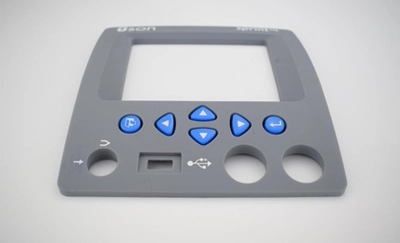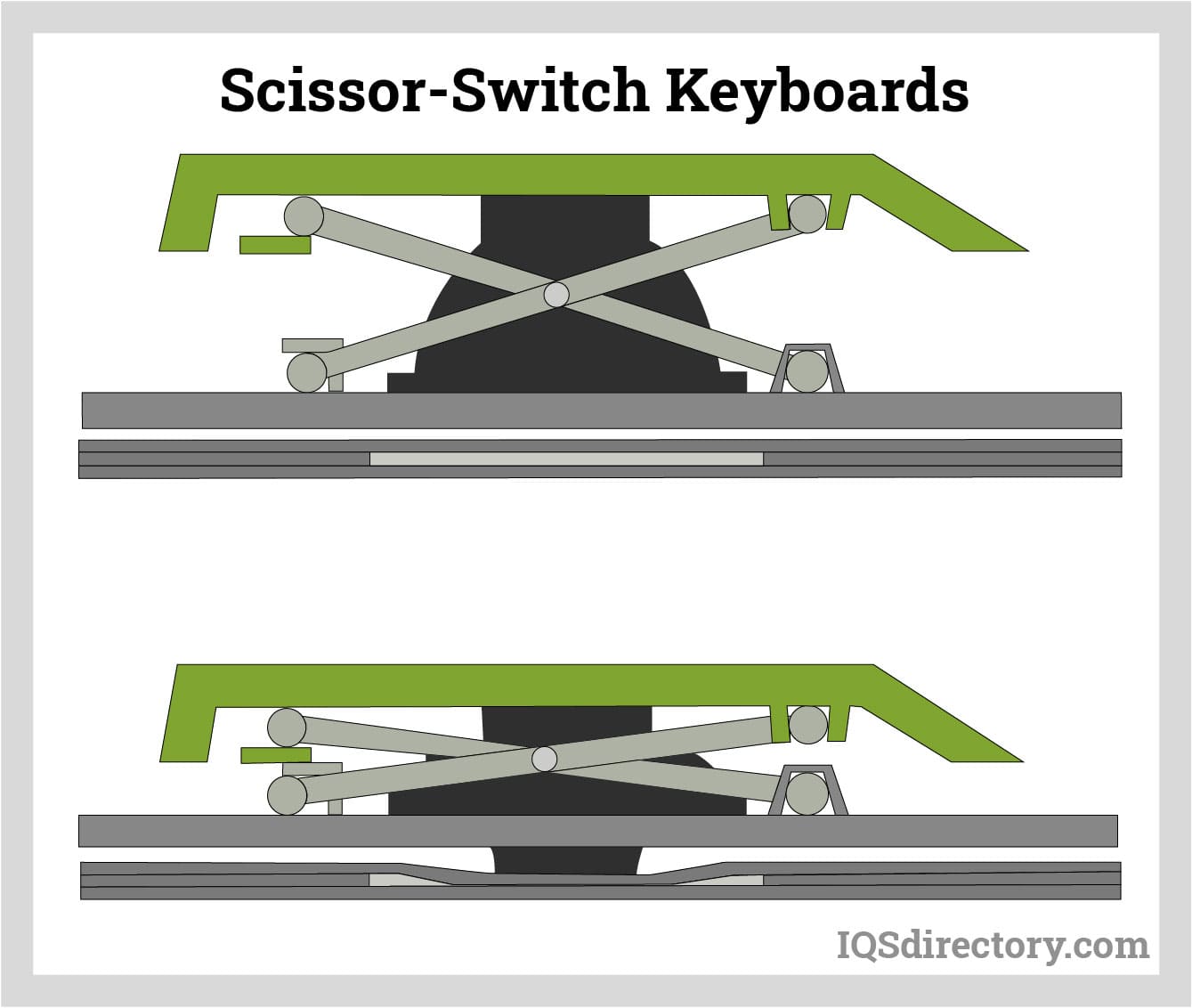All Regarding Membrane Switch Over: A Comprehensive Guide for Beginners
Membrane layer switches are important components in modern-day electronics, supplying an one-of-a-kind interface for customer interaction - membrane switch. Their split building, including overlays and conductive traces, supplies functionality and longevity. Unlike standard mechanical switches, membrane buttons provide a streamlined design and personalized choices. Comprehending their vital functions and advantages can transform item design. The ins and outs of their application and design considerations necessitate further exploration.
What Is a Membrane layer Switch over?
A membrane button is a sort of electrical switch that is composed of an adaptable membrane layered over a printed circuit card. This layout allows for a smooth and small interface, commonly utilized in numerous electronic tools. Membrane layer switches are generally located in consumer devices, clinical equipment, and commercial machinery as a result of their sturdiness and resistance to ecological factors.The construction generally consists of several layers, such as visuals overlays and glue backing, which provide tactile feedback and safeguard the circuitry beneath. The operation of a membrane switch is started when pressure is applied to the surface, completing an electrical circuit.These switches are valued for their convenience, enabling customized designs and printed graphics that cater to specific user interfaces. Their low-profile nature reduces space requirements, making them ideal for applications where traditional switches might not fit. On the whole, membrane layer buttons provide a practical and aesthetic remedy for contemporary electronic devices.
Trick Elements of Membrane Layer Changes
Membrane switches consist of a number of essential components that add to their capability and performance. The top layer, called the overlay, supplies the interface and is commonly published with signs or graphics. Below the overlay exists a spacer layer, which divides the conductive elements and avoids unintentional activation. The next essential part is the graphic layer, which boosts looks and ensures the resilience of the design.Conductive traces, generally made from products like silver or carbon, are printed on the circuit layer. When stress is put on the overlay, these traces enter get in touch with, completing the circuit. In addition, a backing layer supplies structural assistance and can be made from materials such as polyester or polycarbonate. With each other, these parts produce a reputable, straightforward interface ideal for different applications, from house home appliances to commercial equipment. Recognizing these elements is necessary for anybody curious about membrane switch modern technology.
How Membrane Layer Switches Work
Comprehending just how membrane changes feature is important for valuing their prevalent use in different gadgets. A membrane layer switch operates with a collection of layers, including a graphic overlay, spacer, and a circuit layer. When stress is put on the overlay, it presses the spacer layer, allowing the circuit layer to make get in touch with and finish an electric circuit. This action sends a signal to the gadget, motivating a feedback, such as turning on a light or activating a function.Membrane switches over can be made with various attributes, including tactile feedback, backlighting, and custom-made graphics, boosting customer communication. Their building and construction allows for a closed style, securing the interior elements from dirt, wetness, and impurities. This durability makes them suitable for varied applications, from customer electronic devices to commercial tools. On the whole, the simpleness and performance of membrane layer switches over add to their appeal in contemporary technology.
Advantages of Membrane Switches Over Mechanical Buttons
While mechanical buttons have actually long been a staple in lots of gadgets, membrane switches deal distinctive benefits that make them progressively appealing. One considerable benefit is their slim account, permitting for even more small designs and greater adaptability in item advancement. Furthermore, membrane switches over attribute an uniform surface, which boosts visual charm and simplifies cleansing, making them appropriate for environments where health is critical.Another benefit is their resistance to dust and dampness. Unlike mechanical switches, which can be endangered by environmental elements, membrane layer switches provide a covered interface that protects versus pollutants - membrane switch. Furthermore, membrane layer switches generally have a longer lifespan as a result of fewer relocating parts, causing improved resilience and reliability.Cost-effectiveness is additionally a significant benefit, as membrane layer switches can be created in bulk with reduced manufacturing prices. These aspects incorporate to position membrane layer buttons as a useful choice to conventional mechanical choices in numerous applications
Common Applications of Membrane Layer Switches Over
Membrane switches are extensively made use of in various markets, particularly in consumer electronics and commercial control board. In read review consumer devices, they supply a streamlined, user-friendly interface, while in industrial setups, they boost resilience and performance. Recognizing these applications highlights the versatility and usefulness of membrane layer switches in modern-day technology.
Customer Electronics Gadgets
As customer electronic devices proceed to advance, membrane switches have become a popular option for a range of gadgets because of their convenience and streamlined layout. These buttons are commonly found in smart devices, tablets, and remote controls, where space is limited and looks issue. Their reduced profile and adjustable designs allow manufacturers to create user-friendly interfaces that boost the general individual experience. Furthermore, membrane switches are often made use of in devices such as microwaves and coffee machine, supplying user-friendly control options while resisting dampness and dirt. The toughness and dependability of membrane switches make them ideal for daily consumer items, making certain durability and consistent efficiency. Generally, their combination in consumer electronic devices shows a mix of capability and contemporary design.
Industrial Control Panels
The applications of membrane layer switches expand beyond consumer electronic devices, finding substantial use in commercial control board. These switches are favored for their toughness and resistance to severe environments, making them excellent for producing and procedure control settings. They give a trustworthy interface for drivers to control equipment, monitor procedures, and adjust settings. Membrane layer switches can be tailored to fit details operational demands, incorporating functions like backlighting and tactile comments, boosting view it user experience. Their inconspicuous design enables assimilation into numerous equipment, while their capability to hold up against spills, dust, and extreme temperatures warranties longevity. Generally, membrane layer switches add to reliable and safe procedure in industrial applications, demonstrating their adaptability and performance sought after atmospheres.
Factors To Consider for Creating Membrane Switches
When developing membrane layer buttons, picking the right materials is necessary to assure resilience and performance. Furthermore, comprehending layer arrangement strategies can greatly affect the switch's performance and user experience. These considerations play an essential function in producing reliable and effective membrane switch layouts.
Product Selection Significance
Material option plays an essential function in the style and performance of membrane switches. The chosen materials straight influence the button's longevity, responsive action, and total aesthetic. Secret considerations include the substratum, which need to supply structural integrity while allowing for flexibility, and the visuals overlay, which requires to be resistant to wear and ecological variables. Conductive products ought to assure trusted electric performance, while adhesives must supply solid bonding without compromising the switch's procedure. Furthermore, compatibility with producing processes and end-user settings is important; materials have to stand up to varying temperature levels, moisture levels, and chemical direct exposure. Eventually, appropriate product selection not only boosts the membrane button's performance yet likewise adds to its durability and customer contentment, making it an important aspect of the layout process.

Layer Arrangement Techniques

Often Asked Inquiries
How Lengthy Do Membrane Layer Changes Commonly Last?
Membrane buttons usually have a life expectancy of 1 to 5 million cycles, relying on use and environmental problems. Variables such as design high quality and operating regularity significantly affect their durability and general efficiency long life.

Can Membrane Switches Over Be Personalized for Certain Styles?
Membrane buttons can undoubtedly be personalized to accommodate details layouts, enabling diverse forms, shades, and functionalities. This versatility makes it possible for makers to tailor these buttons to satisfy unique visual and operational needs successfully.
What Materials Are Made Use Of in Membrane Switch Over Building?
Membrane layer switches are commonly constructed making use of materials such as polyester, polycarbonate, and sticky layers. These products provide adaptability, resilience, and resistance to ecological factors, making sure the buttons operate efficiently in different applications and problems.
Are Membrane Layer Switches Waterproof or Resistant to Dampness?
Membrane layer switches can be developed to be moisture-resistant, using specialized layers and products. Their water resistant abilities depend on building high quality and particular applications, making it vital to examine needs for perfect efficiency in numerous settings.
Just How Are Membrane Layer Changes Repaired if Damaged?
Fixing broken membrane layer changes typically entails replacing the affected layer or circuit. Specialists may additionally use conductive sticky or use specialized repair packages, making certain performance is brought back without complete substitute of the entire switch setting up. Unlike standard mechanical switches, membrane layer buttons present a sleek style and adjustable options. A membrane layer switch is a kind of electric switch that is composed of a versatile membrane layer layered over a printed circuit board. The operation of a membrane switch is launched when pressure is used to the surface, finishing an electrical circuit.These switches are valued for their adaptability, allowing personalized styles and important site printed graphics that provide to specific customer interfaces. While mechanical switches have actually long been a staple in many tools, membrane switches over offer unique advantages that make them progressively appealing. Membrane layer buttons normally have a longer lifespan due to less relocating parts, resulting in boosted sturdiness and reliability.Cost-effectiveness is also a significant advantage, as membrane buttons can be produced in bulk with reduced production expenses.